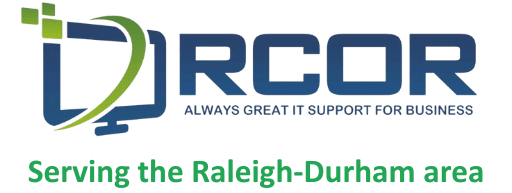Organizing business documents is often hectic and time-consuming, but it doesn’t have to be. On average, employees spend roughly 20 percent of their work day looking for files and information in disorganized folders. An effective document management system (DMS) tackles that lost time while increasing security and collaboration. By streamlining your workflow, you can spend less time worrying about the organization of information and sensitive advanced data.
If you’re wondering how to create a document management system that truly works for your organization, the following steps will guide you through the process in six simple stages. We outline key actions for developing a document management system to increase efficiency—whether you’re starting from scratch or revamping your current system.
Why a Document Management System Matters
Before diving into the steps, it’s important to understand why a document management system is so valuable for your business. A well-implemented DMS not only organizes your files but also ensures that the right people have access to the right information at the right time.
This reduces the risk of lost data, improves compliance, and supports better decision-making across your organization. By investing in a structured approach, you lay the foundation for smoother workflows, enhanced security, and a more productive team—making every minute spent on document management truly count.
Step 1: Understand your purpose and current processes
Determine the goals you want to set for your document management system. Are you looking for better information access, security improvements, version control, etc? Map your information processes as you identify problems with current document processes such as lost files, delayed sign-off, or compliance risk. Knowing your needs and challenges will help you select the best solution and set measurable goals.
Step 2: Select the right document management software
Now, with a better understanding of your goals, start researching document management systems and selecting the right one based on your needs. Will you be using a cloud-based or on-premise DMS? Cloud-based solutions are more flexible and available remotely; while on-premises provide tighter control over data security and storage.
Think about software features such as integration with your current software, being accessible from mobile devices, and having good security.
Step 3: Create a Metadata tagging and version control.
A good DMS should make organizing and finding documents easy. You will need to set up how you want folders organized, as well as for the DMS to have metadata tagging based on project names, document types, or dates to help search for documents quickly.
You may need to enable version control because you need to see what document is the latest version and be able to track any changes if needed.
Version control helps reduce the chance of confusion, makes sure deletions are not made, and through metadata tagging, you will know your team is working on the correct document.
Step 4: Set up role-based access controls.
You can create some security measures for your documents based on role-based access control. Role-based access control means you would set up based on job roles who has permission to view, edit, or allow them to share documents.
Role-based access control will not only boost the security of your sensitive information but can help your organization fulfill licensing obligations and guarantee client confidentiality provisions.
Step 5: Automate the workflow and train the team.
You can save your team time and avoid errors by using workflow automation to automate documents processes like approvals, reviews, notifications, and etc. Most DMS will have workflow automation tools that support a more streamlined collaboration.
Don’t forget – your team will need to learn the system you created, and if there are best practices they will need to know what they are. They will also need a consistent process you want them to follow.
Step 6: Monitor, review, and continually improve.
When you have established your DMS, you will want to monitor it and better yet, ask for feedback from your team.
Set up six month audits to delete obsolete files, check statuses of files to remain compliant, and let your team consider improvements. As your organization grows / changes, update your documents and processes so you maintain seamlessly.
Why Your Organization Should Implement a Document Management System?
When a DMS is well established, you bring order to the chaos, minimize lost time, and reduce your organization’s risk of lost information or non-compliance consequences. That means your team can find what they are looking for, collaborate, and escalate their creative energies on higher value added work.
The DMS features of secure document storage, automated processes, and detailed access control can just make your organization more confident in its actions with the flexibility to adapt.
Are You Ready to Take Control of Your Documents?
Taking a strategic approach to your document management will fundamentally change your organization, improve its document and information management, and lead to better organization, security, and the ability to focus on the most urgent, higher-value tasks. By following the 6 steps on how to create a document management system, you’ll develop a process that minimizes lost time and distractions, reduces errors, and supports better communication, quality, and efficiency for higher-value work—all while keeping your important documents safe and accessible.
If you are ready to take control of your document management, RCOR specializes in providing businesses with the experience and expertise to implement customized solutions that meet your organization’s needs. Whether you are looking to implement a system for the first time or upgrade an existing one, our team will guide you through the process to ensure your organization has the system you need to achieve your document management objectives.

